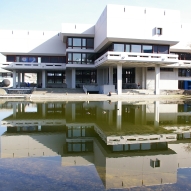| Dokumentenart: | Artikel | ||||
|---|---|---|---|---|---|
| Titel eines Journals oder einer Zeitschrift: | Nephrology Dialysis Transplantation | ||||
| Verlag: | OXFORD UNIV PRESS | ||||
| Ort der Veröffentlichung: | OXFORD | ||||
| Band: | 32 | ||||
| Nummer des Zeitschriftenheftes oder des Kapitels: | 4 | ||||
| Seitenbereich: | S. 730-737 | ||||
| Datum: | 2017 | ||||
| Institutionen: | Medizin > Abteilung für Nephrologie | ||||
| Identifikationsnummer: |
| ||||
| Stichwörter / Keywords: | RABBIT ANTITHYMOCYTE GLOBULIN; KIDNEY-TRANSPLANTATION; MEDIATED REJECTION; CROSS-MATCH; C1Q BINDING; RECIPIENTS; DACLIZUMAB; BEADS; allograft survival; antibody-mediated rejection; donor-specific antibodies; induction therapy; kidney transplantation | ||||
| Dewey-Dezimal-Klassifikation: | 600 Technik, Medizin, angewandte Wissenschaften > 610 Medizin | ||||
| Status: | Veröffentlicht | ||||
| Begutachtet: | Ja, diese Version wurde begutachtet | ||||
| An der Universität Regensburg entstanden: | Ja | ||||
| Dokumenten-ID: | 39113 |
 Web of Science
Web of ScienceZusammenfassung
Background. Pre-transplant donor-specific anti-human leukocyte antigen (HLA) antibodies (DSA) have been associated with antibody-mediated rejection (AMR) and early kidney allograft loss. Uncertainties remain regarding the general applicability of these findings and the optimal induction therapy in DSA-positive patients. Methods. Pre-transplant sera from 174 patients receiving a ...

Zusammenfassung
Background. Pre-transplant donor-specific anti-human leukocyte antigen (HLA) antibodies (DSA) have been associated with antibody-mediated rejection (AMR) and early kidney allograft loss. Uncertainties remain regarding the general applicability of these findings and the optimal induction therapy in DSA-positive patients. Methods. Pre-transplant sera from 174 patients receiving a crossmatch-negative kidney transplant were retrospectively analysed for DSA using Luminex technology. DSA with meanfluorescence intensity (MFI) values above 500 were considered positive. All recipients received basiliximab induction and tacrolimusbased maintenance immunosuppression. DSA were monitored post-transplantation in patients with pre-transplant DSA. Antibody results were correlated with the incidence of rejection and graft loss. Results. In total, 61/174 patients had pre-transplant DSA. We found a strong correlation between the presence of DSA against class I and II HLA and DSA MFI greater than 10 000. Both DSA patterns independently predicted an increased risk of early AMR (odds ratio 4.24 and 4.75, respectively, P < 0.05). The risk for AMR in patients with intermediate MFI (3000-10 000) gradually increased with increasing MFI but group sizes were too small to allow for final conclusions. The risk for AMR was comparable to nonsensitized patients in patients with only class I or II HLA-DSA or MFI below 3000. 5-year allograft survival was lowest in patients with simultaneous presence of class I and II HLA-DSA and MFI above 10 000 (45%) but was comparable between patients with only HLA class I or II or no DSA (90.0, 90.0 and 88.1%, respectively). AMR was the only independent predictor of graft loss. Undetectable DSA 14 days post-transplant predicted excellent long-termoutcome. Conclusion. The favourable outcome in the majority of DSA-positive patients despite non-depleting antibody induction and the poor outcome in patients with class I and II HLA-DSA and high DSA strength call for a differentiated therapeutic approach in this patient population.
Metadaten zuletzt geändert: 25 Nov 2020 15:46




 Altmetric
Altmetric